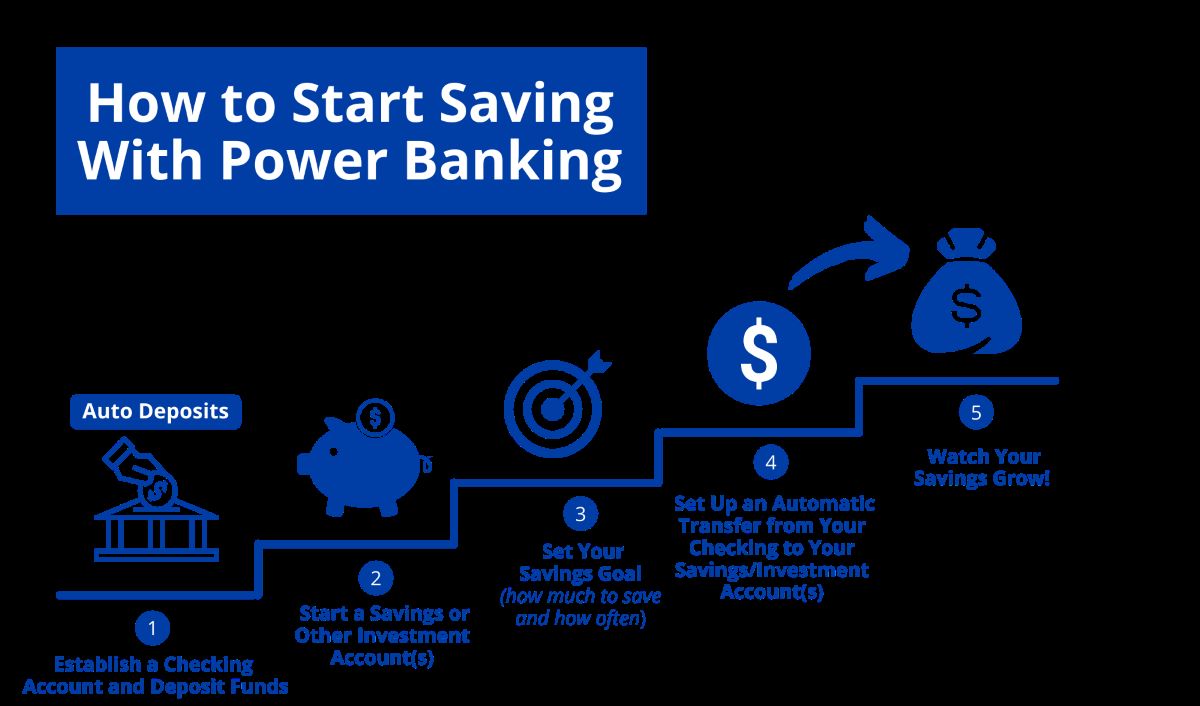

Finance
How To Get Care Credit With Bad Credit
Published: January 6, 2024
Discover how to secure Care Credit even with bad credit. Finance your healthcare expenses with ease and convenience.
(Many of the links in this article redirect to a specific reviewed product. Your purchase of these products through affiliate links helps to generate commission for LiveWell, at no extra cost. Learn more)
Table of Contents
Introduction
Having access to affordable healthcare is crucial for individuals and families. However, sometimes unexpected medical expenses can pose a financial burden. This is where CareCredit comes in. CareCredit is a healthcare credit card that allows individuals to spread out the cost of medical treatments and procedures over time. Whether it’s dental work, vision correction, or veterinary care for a beloved pet, CareCredit provides a flexible payment option.
One common concern for many people is how to get CareCredit with bad credit. Poor credit history or a low credit score can make it challenging to qualify for financing options. However, the good news is that even with bad credit, you may still have options to get approved for CareCredit.
In this article, we will explore the process of getting CareCredit with bad credit, the credit requirements, and alternative options available to individuals who may not meet the traditional criteria.
It is important to note that while CareCredit is designed to assist individuals with their healthcare financing needs, it still operates as a credit card. This means that potential applicants will need to meet certain credit requirements in order to be approved.
Let’s delve into the specifics of understanding CareCredit and how you can navigate the process even if you have less than perfect credit.
Understanding Care Credit
CareCredit is a healthcare financing option that allows individuals to pay for medical treatments and procedures over time. It functions like a credit card specifically designed for healthcare expenses. CareCredit offers various promotional financing options, including interest-free plans and low fixed monthly payments, making it an attractive choice for those with limited financial resources.
One of the key benefits of CareCredit is its acceptance at a wide network of healthcare providers. This includes dental clinics, vision care centers, cosmetic surgery practices, veterinary clinics, and more. By using CareCredit, individuals can access the necessary healthcare services they need without having to worry about immediate payment.
While CareCredit is not free money and requires repayment, it provides individuals with the flexibility to pay off their medical bills over an extended period of time. This can be especially helpful for unexpected medical expenses or for procedures that may not be covered by insurance.
It’s important to understand that CareCredit operates like a traditional credit card. Like any credit card, there are interest rates and fees associated with maintaining a balance or missing payments. To ensure responsible usage, it is crucial to carefully review the terms and conditions, including interest rates and repayment terms, before applying for CareCredit.
Now that we have a better understanding of what CareCredit is and how it works, let’s move on to exploring the credit requirements to qualify for this financing option, particularly for individuals with bad credit.
Exploring Credit Requirements
When it comes to obtaining CareCredit with bad credit, it’s important to understand the credit requirements set by the company. While CareCredit does perform a credit check during the application process, they have more lenient criteria compared to traditional credit card issuers. This means that individuals with less than perfect credit still have an opportunity to get approved.
Although there is no specific credit score requirement disclosed by CareCredit, it is generally recommended to have a credit score of at least 600 or higher to increase the chances of approval. However, even if your credit score falls below this threshold, it doesn’t necessarily mean you will automatically be declined.
CareCredit takes several factors into consideration when evaluating an application. These include your overall credit history, income level, and existing debt obligations. While a poor credit history may be a red flag, other positive factors such as a steady income and low debt-to-income ratio can help offset the impact of bad credit.
In some cases, CareCredit may also offer lower credit limits for individuals with bad credit. This helps mitigate the potential risks associated with lending to those with a less favorable credit profile.
To increase your chances of getting approved for CareCredit with bad credit, it is important to have a stable income and demonstrate responsible financial behavior. This includes paying your bills on time, reducing outstanding debt, and potentially adding a co-signer with a better credit history to the application, if possible.
If you find that your credit does not meet the requirements for CareCredit or you are unable to get approved, don’t worry. There are alternative financing options available specifically designed for individuals with bad credit. In the next section, we will explore these alternatives in more detail.
Researching Options for Bad Credit
If you have bad credit and are unable to qualify for CareCredit, there are still options available to help you finance your healthcare expenses. It’s important to research and explore alternative financing options to find the best solution that fits your needs. Here are a few options to consider:
- Healthcare Providers’ In-House Financing: Many healthcare providers offer their own in-house financing options, allowing patients to spread out the cost of their medical treatments. These arrangements are often more flexible and have lower credit requirements compared to traditional lenders.
- Medical Credit Cards: Similar to CareCredit, there are other medical credit cards available that specifically cater to individuals with bad credit. These cards may have more relaxed credit requirements and can be used to cover various healthcare expenses.
- Payment Plans: Some healthcare providers offer payment plans where you can negotiate a payment schedule directly with the provider. This can be a good option if you can reach an agreement that accommodates your financial situation.
- Personal Loans: If you can’t find a specific healthcare financing option, you can explore personal loan options. While the interest rates may be higher for individuals with bad credit, personal loans can provide the necessary funds to cover your medical expenses.
- Government Assistance Programs: Depending on your financial situation and the type of medical treatment needed, you may be eligible for government assistance programs. These programs can help cover the costs of healthcare services for individuals with limited financial resources.
Before committing to any financing option, it is important to carefully review the terms and conditions, including interest rates, repayment schedules, and fees. Take the time to compare different options, assess your ability to repay the debt, and choose the option that best fits your financial situation.
Remember, the goal is to find a financing solution that allows you to access the necessary healthcare services while also managing your financial obligations effectively.
Applying for Care Credit with Bad Credit
Applying for CareCredit with bad credit may seem challenging, but it is still possible to get approved. Here are some steps you can take to improve your chances:
- Gather your financial information: Before applying, gather all relevant financial documents, including proof of income, bank statements, and any other supporting documents that demonstrate your ability to repay the debt.
- Check your credit report: Obtain a free copy of your credit report and review it for any errors or discrepancies. If you find any inaccuracies, be sure to dispute them and have them rectified to improve your credit standing.
- Apply with a co-signer: Consider applying with a co-signer who has a better credit history. This can increase your chances of getting approved as the co-signer’s creditworthiness serves as additional security for the lender.
- Start with a smaller credit limit: If you have bad credit, it may be helpful to start with a smaller credit limit. This can increase your likelihood of approval and provide an opportunity to rebuild your credit as you make timely payments.
- Be honest and provide explanations: When filling out the application, be honest about your financial situation. If you have experienced a financial setback or have any extenuating circumstances, provide a detailed explanation. This allows the lender to better understand your situation.
- Consider a secured credit card: If you are unable to get approved for CareCredit, consider applying for a secured credit card. With a secured credit card, you provide a security deposit as collateral, which reduces the risk for the lender and improves your chances of approval.
Remember, while these steps can improve your chances of getting approved, it is ultimately up to the lender to determine your eligibility. It’s essential to manage your expectations and explore alternative financing options if you are unable to secure CareCredit.
Lastly, if you do get approved for CareCredit with bad credit, it’s important to be responsible with your credit usage. Make your payments on time, keep your credit utilization low, and work towards improving your credit score for future financial endeavors.
Now that we have covered the process of applying for CareCredit with bad credit, let’s move on to some valuable tips for improving your chances of approval.
Tips for Improving Chances of Approval
While getting approved for CareCredit with bad credit may require some effort, there are steps you can take to improve your chances. Consider the following tips:
- Improve your credit score: Work on improving your credit score by making all your payments on time, reducing your debt, and addressing any errors on your credit report. Paying off outstanding balances can have a positive impact on your credit score.
- Build a positive credit history: If you don’t have an established credit history, consider applying for a secured credit card or becoming an authorized user on someone else’s credit card. Demonstrating responsible credit usage and making timely payments can help boost your creditworthiness.
- Reduce your debt-to-income ratio: Paying down existing debts can lower your debt-to-income ratio, which is an important factor lenders consider when evaluating your application. Aim to keep your debt-to-income ratio below 30% to improve your chances of approval.
- Show stability in income: Lenders want to see that you have a stable source of income to make timely payments. If possible, provide evidence of a steady job or consistent income to increase your chances of approval.
- Save for a higher down payment: If you can afford it, consider making a larger down payment when applying for CareCredit. This shows your commitment and lowers the risk for the lender, potentially improving your chances of getting approved.
- Pay attention to your application: Double-check your application for accuracy and completeness. Ensure all information provided is correct and thorough, and include any additional necessary documentation to support your financial stability.
By implementing these tips, you can strengthen your financial position and increase your chances of getting approved for CareCredit. However, in the event that you are unable to secure CareCredit, don’t be discouraged. There are still alternative financing options available, as discussed earlier in this article.
It’s important to approach the application process with patience and perseverance. Keep in mind that rebuilding your credit takes time and effort, but with responsible financial habits, you can improve your creditworthiness over time.
Now, let’s explore some alternative options to CareCredit for individuals with bad credit.
Alternatives to Care Credit for Bad Credit
If you have bad credit and are unable to qualify for CareCredit, there are alternative financing options available. While these alternatives may have different requirements and terms, they can still help you cover your healthcare expenses. Here are a few options to consider:
- Personal Loans: Personal loans can be obtained from banks, credit unions, or online lenders. These loans can be used for various purposes, including medical expenses. Look for lenders that specialize in bad credit loans or consider applying with a co-signer to increase your chances of approval.
- Medical Credit Cards: Aside from CareCredit, there are other medical credit cards available specifically designed for financing healthcare expenses. Some of these cards may have more lenient credit requirements, making them suitable for individuals with bad credit.
- Healthcare Provider Financing: Many healthcare providers offer their own financing options. Talk to your healthcare provider to inquire about their in-house financing programs or payment plans. These options may have lower credit requirements and can be more flexible compared to traditional lenders.
- Community Assistance Programs: There may be local or community-based programs that provide financial assistance for healthcare expenses. These programs can be helpful for individuals with limited financial resources. Research organizations and charitable foundations in your area that offer grants or support for healthcare costs.
- Crowdfunding: Crowdfunding platforms can be utilized to raise funds for healthcare expenses. Share your story and financial need on platforms like GoFundMe or Kickstarter and reach out to friends, family, and your community for support.
Remember to carefully review the terms and conditions of any alternative financing options you consider. Pay attention to interest rates, repayment terms, and any associated fees. Compare multiple options and choose the one that best suits your financial situation and needs.
Lastly, while exploring these alternatives, continue working on improving your credit score and managing your finances responsibly. This will help you secure better financing options in the future.
Now that we have covered alternative options, let’s summarize the information discussed in this article.
Conclusion
Obtaining CareCredit with bad credit may require some extra effort, but it is not impossible. By understanding CareCredit’s credit requirements, researching alternative options, and applying with a strategic approach, you can increase your chances of approval.
Remember to gather your financial information, check your credit report for errors, and consider applying with a co-signer. Additionally, improving your credit score, reducing your debt-to-income ratio, and demonstrating stable income can also improve your eligibility for CareCredit.
If you are unable to qualify for CareCredit, there are alternative options available. Explore healthcare provider financing, medical credit cards, personal loans, community assistance programs, and crowdfunding platforms to cover your healthcare expenses.
Regardless of the financing option you choose, it’s essential to carefully review the terms and conditions before committing. Responsible financial management, including making timely payments and improving your credit score, will also benefit you in the long run.
While bad credit may pose challenges, it does not have to stand in the way of accessing the healthcare services you need. By taking proactive steps, researching options, and being patient and persistent, you can secure the financing necessary to take care of your health and well-being.
Remember, everyone deserves access to affordable healthcare, regardless of their credit history. Don’t hesitate to explore the available resources and find a solution that works for you.














